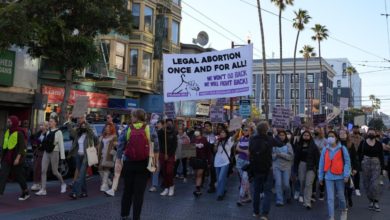Originally posted on Breaking the Chains.
Working-class and oppressed women are bearing the brunt of the combined COVID and economic crises in the United States. December’s jobs numbers produced shocking headlines throughout the mainstream media. CNN’s headline read: “The US economy lost 140,000 jobs in December. All of them were held by women.” A separate Bureau of Labor Statistics survey, which received much less mainstream coverage, indicates that nearly all the December jobs were lost by Black and Latina women.
The COVID-19 pandemic has intensified the inequalities, discrimination and exploitation that characterize life for U.S. working-class and oppressed women. Historically, gendered occupations like domestic or service-sector work have made women especially vulnerable to harassment, exploitation and low wages. Throughout the pandemic, working women have been on the frontlines of care systems and essential work, yet they also receive the lowest wages with minimal COVID protections.
By the end of April 2020, it was clear that women workers were going to be profoundly impacted by the combined crises: women accounted for 55 percent of the 20.5 million jobs lost in April. Over the last eight months, some sectors like manufacturing and construction have begun adding jobs back to their workforces. But jobs in education, hospitality and retail — jobs that have been devalued, underfunded and underpaid for decades — had steep job losses in December. Hotel workers, restaurant workers and other hospitality sector workers lost 498,000 jobs in December, 3.5 times as many jobs as were lost overall in December. Women accounted for 56.6 percent of these job losses, while making up 53.1 percent of the leisure and hospitality workforce. In other words, women are losing jobs because they work in sectors that have been profoundly impacted by the pandemic, but they are also losing jobs disproportionately within those industries. A shocking illustration of this dynamic occurred within the government sector in December: Women make up 57.5 percent of the government workforce, but accounted for 91.1 percent of that sector’s 45,000 lost jobs in December.
Black and Latina women disproportionately work in some of the hardest-hit sectors in the pandemic, often in jobs that lack paid sick-leave, flexible hours, or the ability to work from home. Fifty-four thousand Black women left the labor force last month, marking the largest one-month drop in their labor force size since March and April 2020. These trends will only exacerbate long-standing inequalities in Black women’s access to employment.
Indeed, Black women in the U.S. have always been subjected to what Claudia Jones called “super-exploitation,” or the triple exploitation Black women face as an oppressed nationality, as women and as workers. In her famous 1949 essay, “An end to the neglect of the problems of the Negro woman!” Jones wrote: “The low scale of earnings of the Negro woman is directly related to her almost complete exclusion from virtually all fields of work except the most menial and underpaid.” Last month’s jobs numbers may be shocking, but they simply reveal what has always been true of the U.S.: racism, sexism and capitalism operate together to produce the special oppression of Black women.
The federal and state governments could have prioritized job growth in sectors that are not only socially necessary like education, healthcare or eldercare, but also employ women and oppressed people in high numbers. Instead, federal relief packages lined the pockets of billionaires.
Working women’s crisis-level job losses are only partially explained by their overrepresentation in devalued, underfunded and underpaid sectors of the economy. As schools and daycares closed, working women were forced to make hard trade-offs between work and parenting. Low-wage jobs are less likely to allow parents to work from home or provide flexible work hours; these are the jobs that in a caregiving crisis force women to leave the workforce entirely.
Working mothers already disproportionately assumed caregiving responsibilities in the United States, a consequence of both the sexual division of labor within the family and the utterly inadequate childcare system. COVID-19 has only exacerbated women’s unwaged care responsibilities: Women ages 25 to 44 are almost three times as likely as men to not be working during the pandemic due to childcare demands.
Massive job losses combined with an utter lack of social provisioning — no access to childcare, healthcare or affordable housing — present a massive challenge for women who were already overworked and underpaid before the pandemic. And there is no relief in sight. Economists predict that women will feel the impact of this crisis for years to come. We know that long-term unemployment makes it more difficult to find a job and depresses wages when a worker does finally get a job. Almost 40 percent of the women unemployed in December have been out of work for six months or more. Before the pandemic, the pay gap was 63 percent for Black women and 55 percent for Latina women; experts are now saying we can expect to see these gaps widen.
There can be no women’s liberation under a system that would rather see 111 percent of job losses go to women than pay for childcare. As we fight to defend and expand the rights of working women — the right to a job, for higher pay, an end to workplace violence and harassment — we must also fight for a whole new system. The COVID crisis has made clear what working-class and oppressed women have always known: Capitalism means no safety net. Only socialism, a system that plans and meets the needs of the people, can achieve the liberation of all women.





